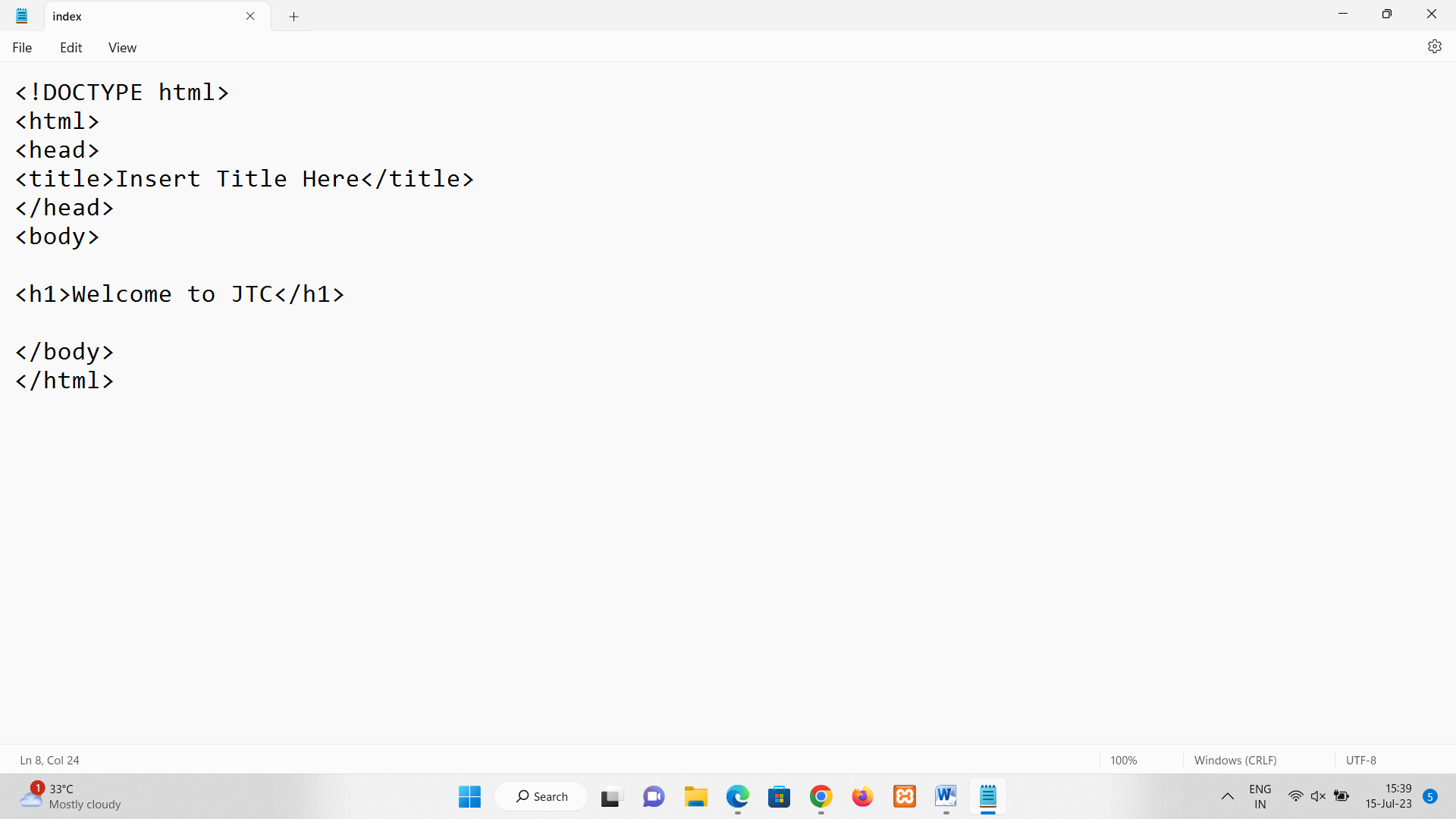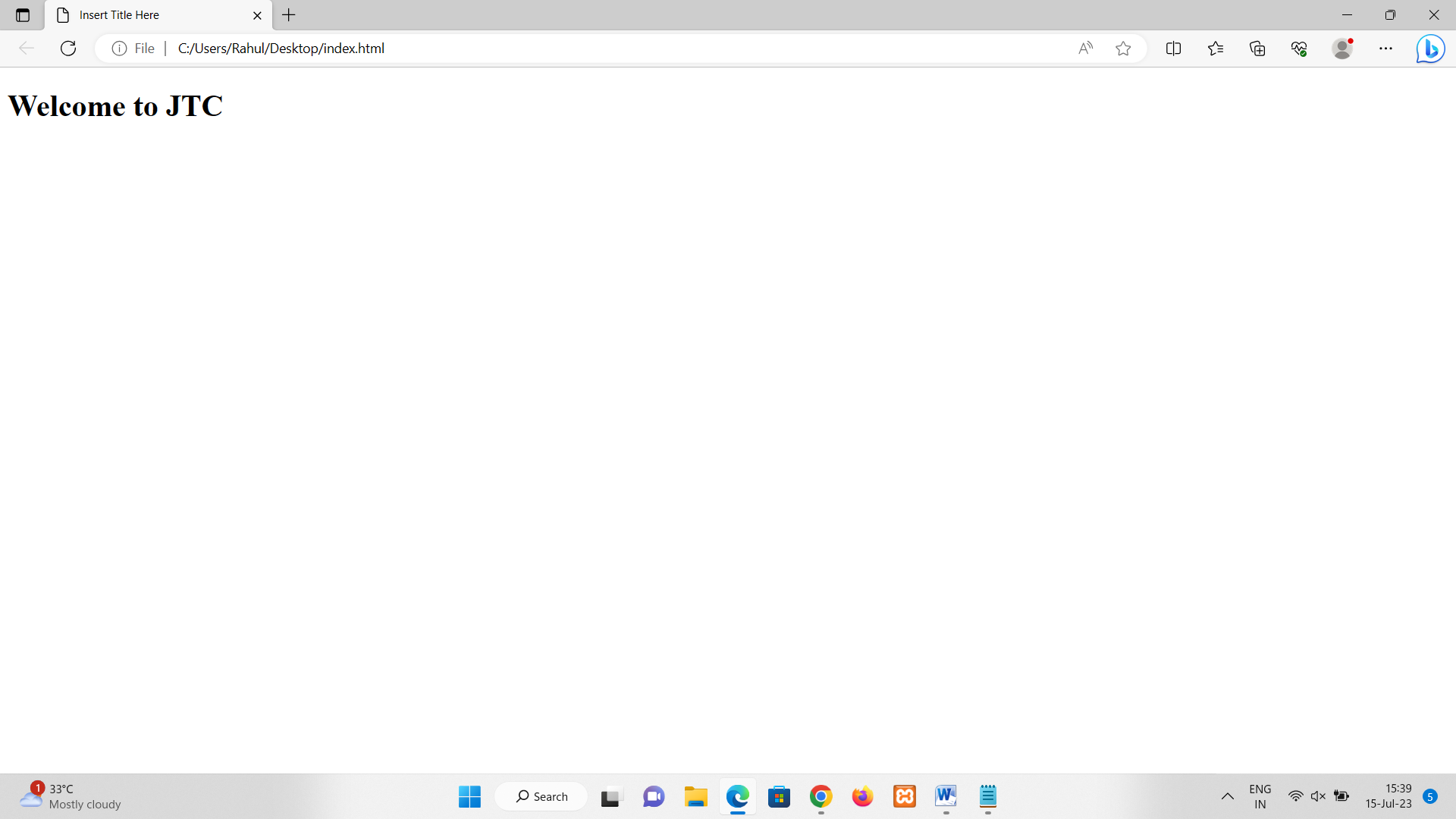HTML Introduction
• HTML stands for Hyper Text Markup Language.
• HTML is used to structure and present web content.
• HTML enables the creation of hyperlinks for easy navigation between web pages.
• HTML is essential for building and displaying web pages, providing a foundation for online information.
History of HTML
• HTML was created by Tim Berners-Lee in 1990 as a simple markup language for sharing scientific documents.
• HTML evolved through different versions, with HTML 2.0 being the first standard and HTML5 being the latest major version.
• The development of HTML was influenced by the need for a universal language to display content on the emerging World Wide Web.
• The World Wide Web Consortium (W3C) played a crucial role in the standardization and development of HTML.
• HTML has continually evolved to support new technologies, multimedia elements, and responsive web design.
HTML Versions
• HTML 1.0: Initial HTML version from 1993, laying the foundation for structuring web pages.
• HTML 2.0: Second HTML version released in 1995, introducing improvements and wider browser support.
• HTML 3.2: HTML version with enhanced features, released in 1997 for better web development capabilities.
• HTML 4.01: Updated version in 1999, offering improved accessibility, multimedia support, and stricter coding standards.
• XHTML 1.0: XML-based HTML variant launched in 2000, emphasizing document structure and compatibility.
• HTML5: Latest major version from 2014, introducing modern elements, multimedia and responsive design capabilities.
HTML Document Structure
<!DOCTYPE html>
<html>
<head>
<title>Insert Title Here</title>
</head>
<body>
<h1> Welcome to JTC </h1>
</body>
</html>
<!DOCTYPE html>:- The DOCTYPE declaration is used to identify the Document type and HTML version. It is not case-sensitive.
<html>:- The <html> tag is used in HTML documents to define the root element of a webpage.It encapsulates all the content on the webpage.
<head>:- The <head> tag is used in HTML documents to contain the metadata and other non-visible elements of a webpage, such as the title, CSS styles, and script references.
<title>:- The <title> tag is used in HTML documents to specify the title of the webpage, which appears on the browser's title bar or in search engine results.
<body>:- The <body> tag is used in HTML documents to enclose the visible content of a webpage, such as text, images, links, and other elements.
<h1>:- The <h1> tag is an HTML element used to define the main heading of a webpage or section. It represents the highest level of heading and usually appears larger and more prominent than other headings.
Steps to write HTML
You can generally write HTML in notepad or TextEdit.
There are many editors for writing HTML.
But, as a beginner you can use Notepad or TextEdit .
Step 1:- Open Notepad
• Click on the windows icon which is available on bottom left side of the Screen or Press Windows + R for run command and search Notepad and press enter.
• Notepad will be open.
Step 2:- Write Some HTML
• Write or copy the above HTML code into the notepad.
Step 3:-Save your HTML
• Click on File, then go to save as in the notepad menu.
• Save the file with “index.html” name and set the save as type to All files.
Step 4:- View the saved file
• Open the saved file with any browser like edge , safari, chrome etc.
The saved file will look like this.





